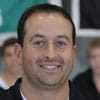How to Maximize Workouts As You Age
You might not be able to swim as fast as you did when you were younger, but you can still do great workouts
We are called “Masters” swimmers for a reason. Because we’ve all aged, we can’t train like we did 10 or 20 years ago. At times, we can’t train like we did six months ago. There are many items that factor into our not being able to train like this.
The most obvious is age. Father Time always wins. He has a perfect record defeating every athlete in every sport. In addition, we simply don’t put the same hours in the pool that we did as age-groupers. We also face injuries, and sometimes life just happens.
Work Smarter, Not Harder
When you’re trying to build your conditioning, you should be focused on pushing your body to the max you can reach safely. Don’t stress over the fact that 20 years ago you could do 10 x 100s on 1:05 and get 10 seconds rest on each one if today you can barely do 5 x 100s on 1:40. It’s OK. It really is. Don’t keep pushing your body to a yardage and time goal that’s only going to frustrate and potentially injure you.
You goal should be to tax your body, especially your cardiovascular system, along a similar timeframe as you once did. Focus on the time, not the distance. This is something I learned while working with USC Head Coach Dave Salo. He uses this concept (effort over a time period versus a distance goal) with every swimmer he coaches, regardless of age or ability.
Take that same set from above (the one you could do 20 years ago) and make one small change. Instead of 10 x 100s on 1:05 holding :55, go to 10 x 75s on 1:05 holding :55.
Your body is getting the same type of workout it did all those years ago in many ways. You’re working hard over the same period of time, and you’re getting the same amount of rest. Your technique is less likely to falter, a key in preventing an injury.
Rollercoaster Rest
You might pride yourself on being a distance swimmer. You might love to do lots of repeats. There’s nothing wrong with that, and I, for one, will never tell you to avoid those yards. What I will tell you is that you need to factor in more recovery time.
For those of you that swam in the 1970s, ’80s, and ’90s and often did sets like 10 x 200s, it’s difficult to get out of that training mindset. You can still do those types of sets, but you need to be aware (especially if you’re in a noncoached workout) that your technique is probably failing you a lot sooner than you think. If you’re training consistently, poor technique is likely the primary reason why your times are slowing down mid-set.
Take that set of 10 x 200s you love and make a few modest adjustments. Take two minutes rest after numbers three, six, and nine. If you’re working hard throughout the set, it’s very likely that your heart rate will stay enough during your two-minute break that you’re not losing anything major from a conditioning perspective. If anything, you’re gaining, because you’re able to push harder after taking a rest.
I like to call this “Roller Coaster Rest.” The idea is that you don’t try and hold a certain time throughout the set. There’ll be peaks and valleys in your performance. The swimming gods won’t punish you if your fastest swim is No. 7 versus No. 10. When the set’s over, you’ll be proud of the time that you did, not the repeat you did it on.
Heart Rate Training
When dealing with your heart, the most important item is to consult your physician first.
Similar to many of the concepts above, what you’re trying to accomplish is determining how much you can tax your body and over what period of time. There are many ways to manually take your pulse, or you can purchase a heart rate monitor that’s designed for use in the pool. If you know what your baseline heart rate was at the peak of your training in the past, you can use that as a guide in the pool now. If you can match the intensity without necessarily matching the overall yardage, then you’re doing the work that’s necessary to be successful.
I’m not suggesting that doing an all-out 25 today is the same as doing a fast 500 in your college years. My point is that if you can push your body to a similar limit in a 400- or 450-yard swim when compared to your 500s of the past (in relatively the same time), then you’re doing good work. Don’t beat yourself up over missing a 50 here and there.
Drills and Fins
If volume is your goal, fill your workouts with drills mid-set; 10 x 200s can easily be turned into 5 x (1 x 200 fast + 4 x 50s drill/swim) or 10 x 200s using fins on the odds and no equipment on the evens.
Final Thought
If you’re in a training group that has members 15 or 20 years younger than you, push yourself to keep pace with them as much as you can but also know that you have earned the right to sit out a 50 anytime you like. Smile as they push off, and when they’re underwater, you can breathe heavy and stretch out before they come back.
Categories:
- Technique and Training

















